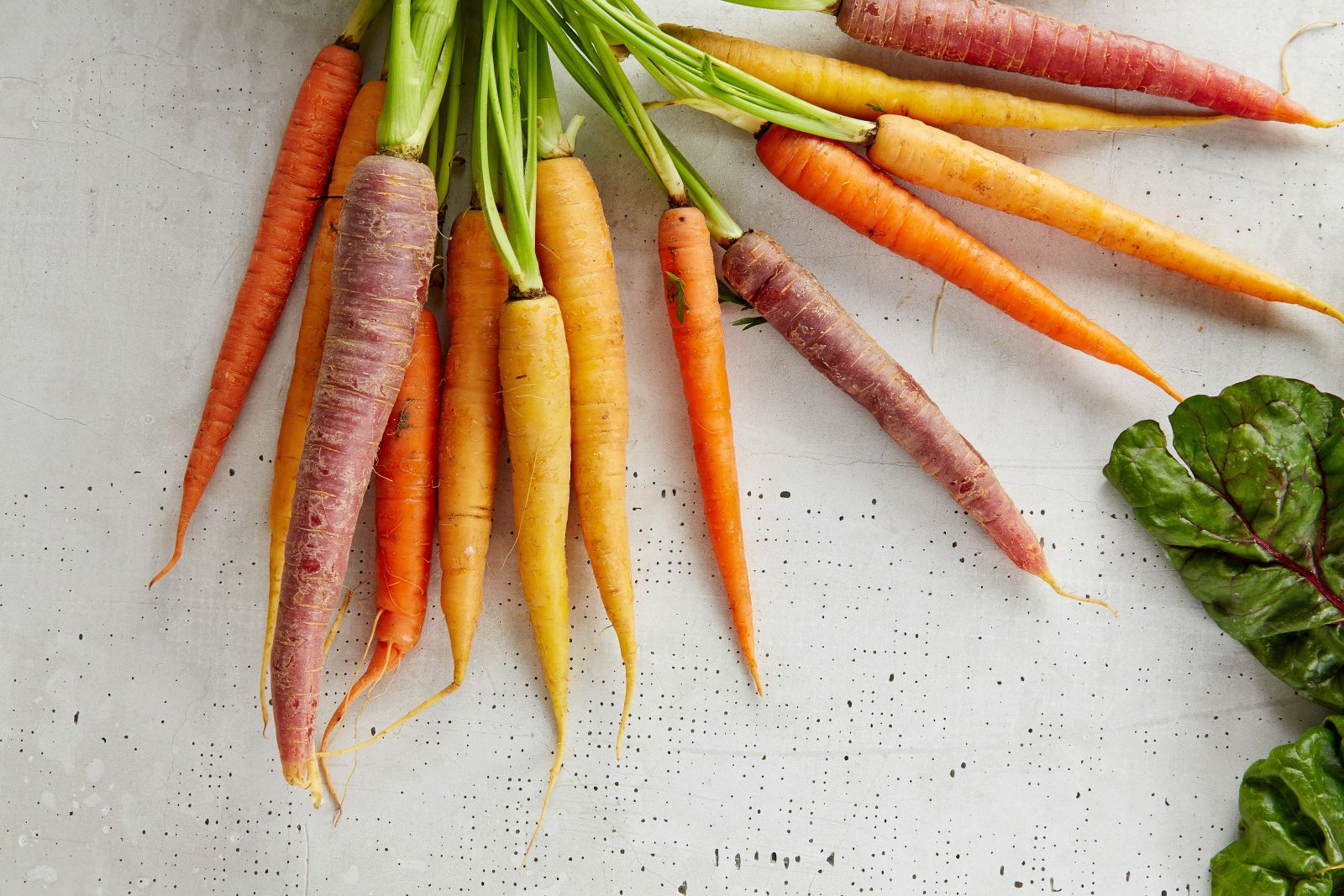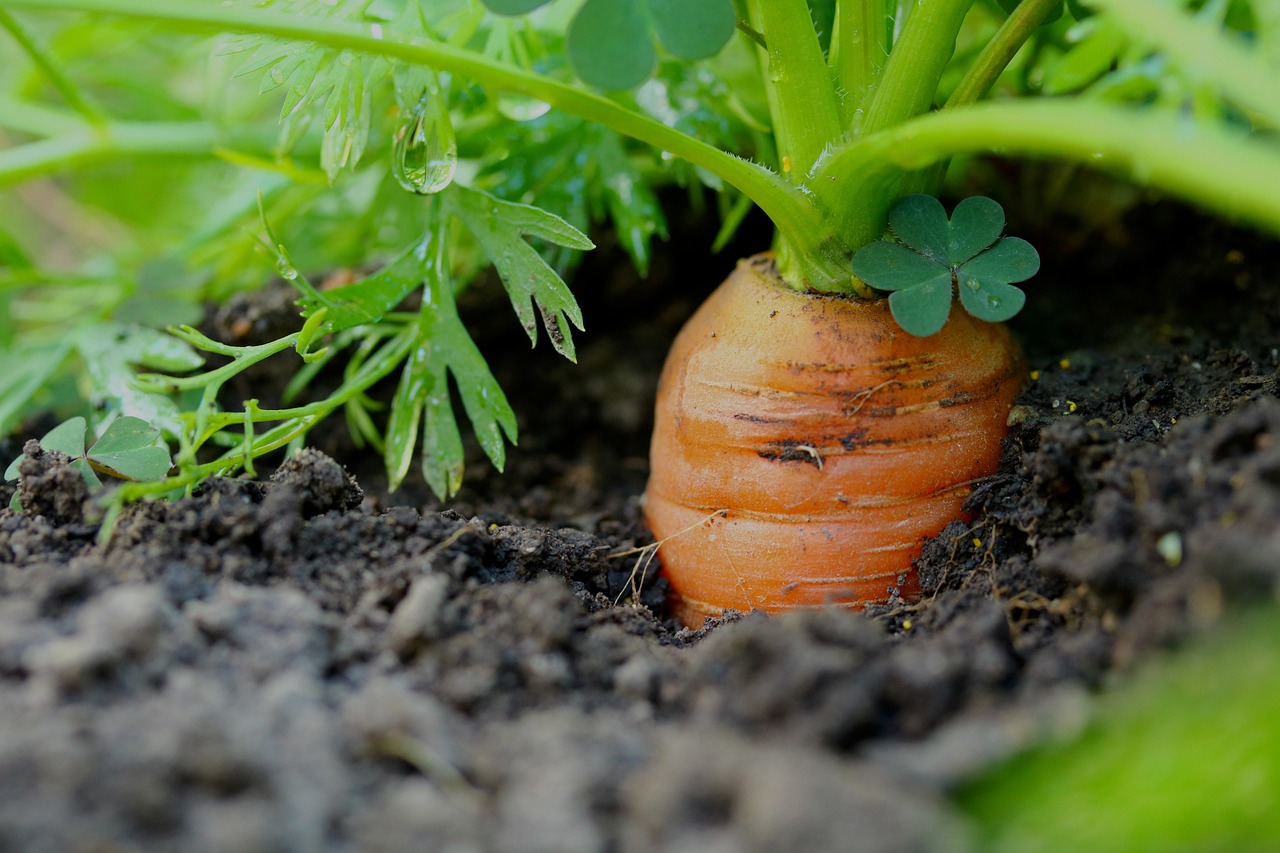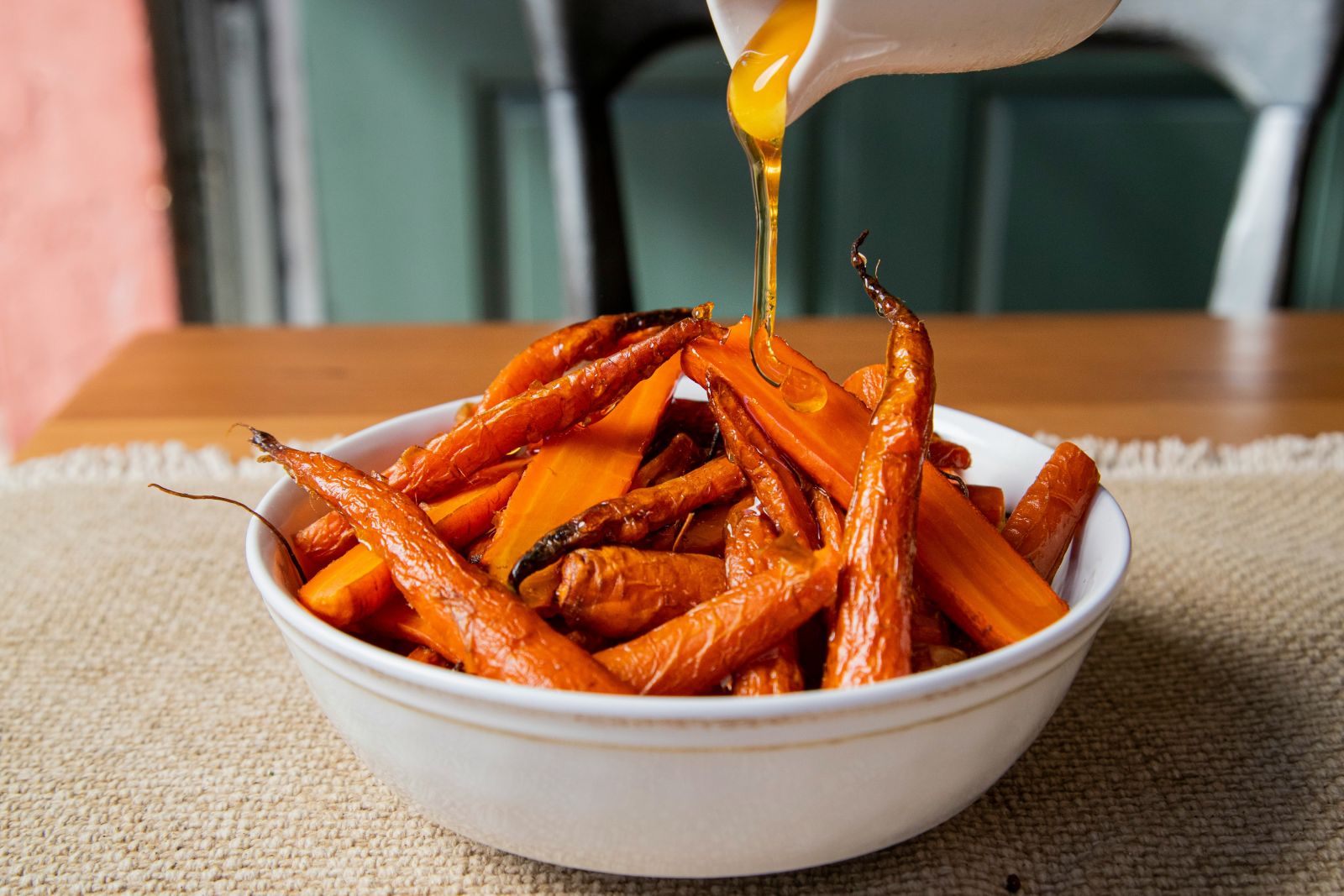Carrots are one of those vegetables that everyone loves—they're sweet, crunchy, and packed with nutrients. Whether munching on them raw, tossing them into a salad, or cooking them into your favourite dishes, carrots are a must-have in any kitchen.
And the best part? They're super easy to grow, even if you're just starting out with gardening (or looking for a fun outdoor activity for the kids).
In this guide, we'll explain how to grow carrots from carrot tops, from why they’re so good for you to how you can get a bumper crop in your own backyard. Plus, we've got a tasty recipe at the end that you’ll want to try!
.jpg)
When you grow carrots from tops, you're regrowing the green, leafy part of the carrot rather than the orange root itself. Carrots are biennial plants, meaning they have a two-year life cycle.
In their first year, they grow the root, which we eat. In their second year, they flower and produce seeds. When you regrow carrots from tops, you're not growing a new root but a leafy plant that can add greenery to your garden or home.
While this method won't produce new carrot roots, it's a fun way to propagate carrot greens and can lead to an aesthetically pleasing plant that might even produce seeds if allowed to mature.

Carrots are a source of nutrient-rich greens and encourage a healthier lifestyle. They are packed with essential vitamins, particularly vitamin A, which are crucial for maintaining healthy vision, immune function, and skin health.
They also offer a good amount of vitamin C, an antioxidant that supports the immune system and helps absorb iron, and vitamin K, which is important for blood and bone health. These veggies even contain minerals like calcium, which is vital for strong bones and teeth, and potassium, which aids in maintaining proper heart function and regulating blood pressure.

To successfully grow carrots at home, you'll need a few basic supplies and a bit of patience. Here's a more detailed guide to get started.
Carrots: Choose fresh carrots with healthy, leafy tops. The greens are essential for regrowing the plant.
Plant the Carrot Tops: Next, you'll need to prepare the carrot tops for planting. Cut off the top inch of the carrot, which includes the part with the leafy greens. You now have two options:
Soil Method: Place the cut carrot top in a shallow dish filled with potting soil. Make sure the green tops are above the soil surface. Keep the soil slightly moist, but avoid overwatering, which can lead to rotting.
Pebble Method: Alternatively, you can place the carrot top in a dish filled with fine pebbles. Add just enough water to cover the base of the carrot. The pebbles will help support the carrot top as it starts to regrow. Refresh the water every other day to keep it clean and oxygenated.
Transition to Soil: After a few days, you should see new green shoots emerging from the top of the carrot. This indicates that the carrot is successfully regrowing. If you’ve started the carrot in pebbles, it’s time to transfer it to soil. Gently plant the carrot top in a raised garden bed filled with potting soil, again ensuring the greens are above the soil surface. Keep the soil consistently moist but not waterlogged.
Ongoing Care: Place the pot in a sunny spot, ideally where it can receive at least 6-8 hours of sunlight daily. Carrots need warmth and light to grow properly. Over time, the carrot top will develop roots and eventually grow into a full carrot plant.
How long do carrots take to grow?
Carrots typically take 70 to 80 days to mature when they are sown, depending on the variety. Some faster-growing varieties may be ready in as little as 60 days, while others may take up to 100 days.
What type of soil or potting mix is best for growing carrots?
Carrots prefer loose, well-drained soil free of rocks and heavy clumps. Sandy loam soil is ideal because it allows the carrot roots to grow straight and long. Adding compost can help improve soil texture and provide necessary nutrients, but avoid using too much nitrogen-rich fertiliser, which can cause the roots to fork.
How often should I water my carrot plants?
Carrots need consistent moisture to develop properly, but they don’t like to be waterlogged. Water them deeply once or twice a week, depending on rainfall and temperature, to ensure the soil stays evenly moist. Mulching around the plants can help retain moisture and keep the soil cool.
When is the best time to plant carrots?
Carrots are cool-season crops and grow best when planted in early spring or late summer. You can plant successive batches every 2-3 weeks during the growing season for a continuous harvest. Carrots can also be grown in mild climates in autumn and winter.
When is the best time to harvest carrots?
Carrots are usually ready to harvest when they reach their mature size, which can vary depending on the variety. The tops of the carrot roots may start to show above the soil surface. You can gently pull one up to check its size. Harvest carrots when they are the size you prefer; leaving them in the ground too long can cause them to become woody and less flavourful.
How do I grow carrots from seeds?
Start by preparing the soil well for seed germination and success. Carrot seeds are tiny, so sow them thinly in rows about 1/4 inch deep. Cover lightly with soil and keep the soil moist until seed germination, which usually takes 1-3 weeks.
Once the seedlings are about 2 inches tall, thin them out so that each carrot has enough space to grow, typically about 2-3 inches apart. Be patient, as carrots take time to develop, but you'll have a bountiful harvest with proper care.

This delicious recipe highlights the natural sweetness of garden-grown carrots, enhanced with honey and aromatic thyme. It's a simple yet flavourful side dish that pairs well with various main courses, or you can eat it as a healthy snack!